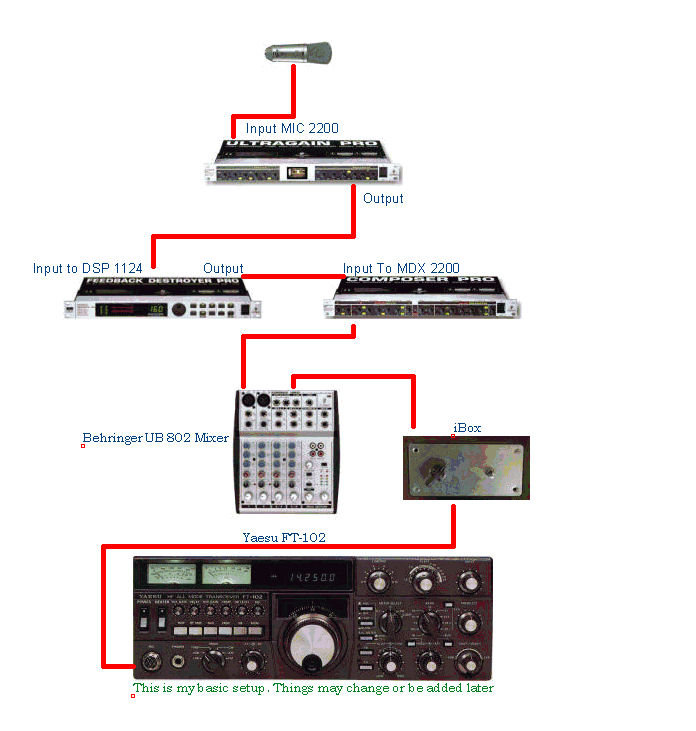|

|


|

|
|
|
|
|
|
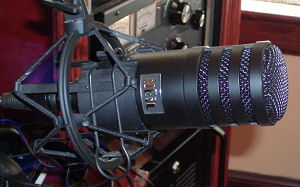
Currently using the Heil PR-781 |
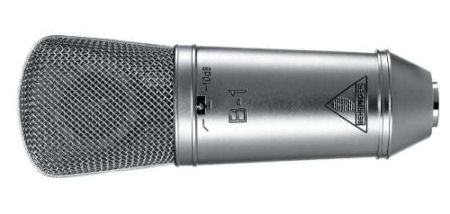
No longer using Behringer B1 Microphone |
I
started with the Behringer B1 microphone which works very good. At
least for me at the time. There are better microphones out there if
your willing to pay the higher price tag. I've heard others using a
microphone costing $30.00 and it sounds like a $200.00 microphone. I'm
not getting that crazy into the audio stuff. The biggest problem I had
with the Behringer is that it's a very sensitive microphone. Listening with my headphone I was able to hear
cars coming down my street long before they reach my house. Airplanes
flying over the house, neighbors in the next block, well you get
the picture. This is a good microphone if you're in a sound control
room. A noise gate is highly recommended with this microphone it
will help
to limit some of the un-wanted background noise. I would not
recommend using this microphone.
I'm now using the Heil PR-781. The PR-781 it does not pickup all the background noise like
the B1 and works well with
my audio gear. James K6JRF shows a comparison between the Heil
PR-781 and Electro Voice RE27 which is a $400 microphone. All the Behringer
audio gear was purchased from ebay for
$40.00 each back in 2008. The Behringer B1 microphone was purchased new
for $99.99 with free shipping from Musician's friend. The Heil PR-718
was purchase from
R&L Electronic at $139.95 |
|
|
MIC2200 - PREAMP:
The least expensive microphone preamp of
quality that you can buy.
The preamp
has other features such as parametric EQ etc. I started using this
because of the Behringer B1 microphone which needs a +48 volts to
operate and
the signal needs to be amplified
to operate. It's now used for audio in and out along with
its other features. I am feeding the microphone into the left channel.
|
|

Mic-2200 Mic Preamp |
EX3200 ULTRAFEX
PRO: Multiband processing for
simultaneous low- and high-frequency
enhancement “Natural Sonic” processor for extremely musical sound
enhancement VSP (Variable Sound Processing) circuitry for simultaneous
enhancer and exciter processing "Dual Mode" ultra-bass enhancer for
awesome soft and tight bass sounds Shift function allows you to
control the frequency range of added bass punch Surround processor for
spatial enhancement and improved stereo imaging Built-in noise
reduction system. |
|
|
|
ULTRAFEX PRO EX3200

2-Channel Multiband Sound
Enhancement System
There are two ways to mod this unit. The first is internally
which can take sometime to do. If your not able to do this mod
yourself. You can check with WZ5Q about doing the mod. Also
check with WZ5O website for information on how to reform this mod. I have
not had mine mod. The second way
to perform this mod is very easy. This mod came from W5UDX see
details below. |
1)
You will have a Balanced Cable coming into the Input of
Channel 1 using the typical TRS 1/4" connector or XLR
connector utilizing the 3ea wires (Signal +, Signal -, and
Shield)
2) The Output of Channel 1 going into the Input of Channel
2 will be using an Unbalanced Cable with the Mono 1/4"
connector utilizing 2ea wires (Signal +, and Shield).
** THE WIRES ARE NOT REVERSED!! **
(You
can use TRS 1/4" connectors for this if you short the
Signal - and the Shield together on both ends of the
cable. Doing this makes it an Unbalanced Connector)
3)
You will have a Balanced Cable going out of the Output of
Channel 2 using the typical TRS 1/4" connector or XLR
connector utilizing the 3ea wires (Signal +, Signal -, and
Shield)
Just another note:
If you were using Unbalanced Cables coming into the Input
of Channel 1 and going out of the Output of Channel 2,
then you would use the opposite Balanced Cable to tie
Channels 1 and 2 together. |
|
Try Theses
Setting As A Starting Point |
|
Channel 1 |
Channel 2 |
|
SHIFT |
= Set to
Ultra Low (Light on) |
|
BASS PROCESSOR |
= Set to "1" |
|
MODE |
= Set to Soft
(light off) |
|
AUTO NR |
= Set to IN
(Light on) |
|
NR SENSITIVITY |
= Set to
where the LED Display just barely goes to full
scale on voice peaks |
|
TUNE |
= Set to 3.3 |
|
PROCESS |
= Set to
Exciter |
|
HIGH MIX |
= Set to "1"
(be careful with this as it will introduce
"Tearing" into the audio if set to high) |
|
SOLO |
= Set to Off
(Light is out) |
|
IN |
= Set to IN
(Light is on) |
|
SURROUND |
= Set to IN
(Light is on) |
|
SURROUND |
= Control set
to "1-2" |
|
|
|
SHIFT |
=
Set to Ultra Low (Light on) |
|
BASS PROCESSOR |
=
Set to "1" |
|
MODE |
=
Set to Soft (light off) |
|
AUTO NR
|
=
Set to IN (Light on) |
|
NR SENSITIVITY |
=
Set to where the LED Display just barely goes to
full scale on voice peaks |
|
TUNE |
=
Set to 3.3 |
|
PROCESS |
=
Set to Exciter |
|
HIGH MIX |
=
Set to "1" (be careful with this as it will
introduce "Tearing" into the audio if set to
high) |
|
SOLO |
=
Set to Off (Light is out) |
|
IN |
=
Set to IN (Light is on) |
|
SURROUND |
=
Set to IN (Light is on) |
|
SURROUND |
=
Control set to "1-2" |
|
|
|
|
DSP1124P -
FEEDBACK DESTROYER PRO :
Dual channel
feedback suppressor

or 2 x 12-band parametric equalizer. You will need to adjust the parametric equalizer
to your voice, microphone and radio every ones voice is different. Below are some settings that I'm using.
The low end bass settings I have turned off only because I feel I have
enough lows coming from the EX3200. I'm using the lower
midrange, midrange and upper midrange settings from the
DSP1124P. You may find most of the audio guys are now
using the new Behringer DEQ2696 which replaced most of the audio gear I'm using. Mode (OF) set as off. Mode (PA) is set
to on. Items highlighted in red are the setting I'm using. Example 50- 80Hz is the best setting range to work with.
These are the settings being used with my Yaesu FT-950, all equalizer setting in the radio are turned off and the radio band
width is set to 3.0k. |
| Filter # |
Mode |
Frequency |
Bandwidth |
Fine |
Gain |
| 1) Bass Setting |
OF |
50 -80Hz |
30 - 60
63 |
-3 |
+3 |
| 2) Lower Midrange |
PA |
100 - 160 |
120 -
60 |
0 |
-1 |
| 3)Midrange |
PA |
600 640
630Hz |
120 - 60
63 |
0 |
-5 |
| 4)Hi Mid -Treble |
PA |
3.2 - 4.5
kHz |
30 - 60 |
+2 |
+4 |
| 5)Treble Polish |
PA |
4 - 5
3.2 kHz |
20 - 60
36 |
-2 |
+4 |
| 6)Upper Midrange |
PA |
1.5 - 2 KHz
2.0 |
51 |
-1 |
-3 |
|
|
|
MDX2200 COMPOSER PRO:
This unit is used to remove background noise and
also service as a compressor limiter.

|
|
|
|
|
Live On The Air Audio Recordings |
|

3.0 kHz
By KD5AW 1/10/2010 |

2.8 khz
By KD5AW 1/10/2010 |

3.0
Khz
By AD4C 6/6/2009 |
|
|
Graph taken by AD4C 6/6/2009
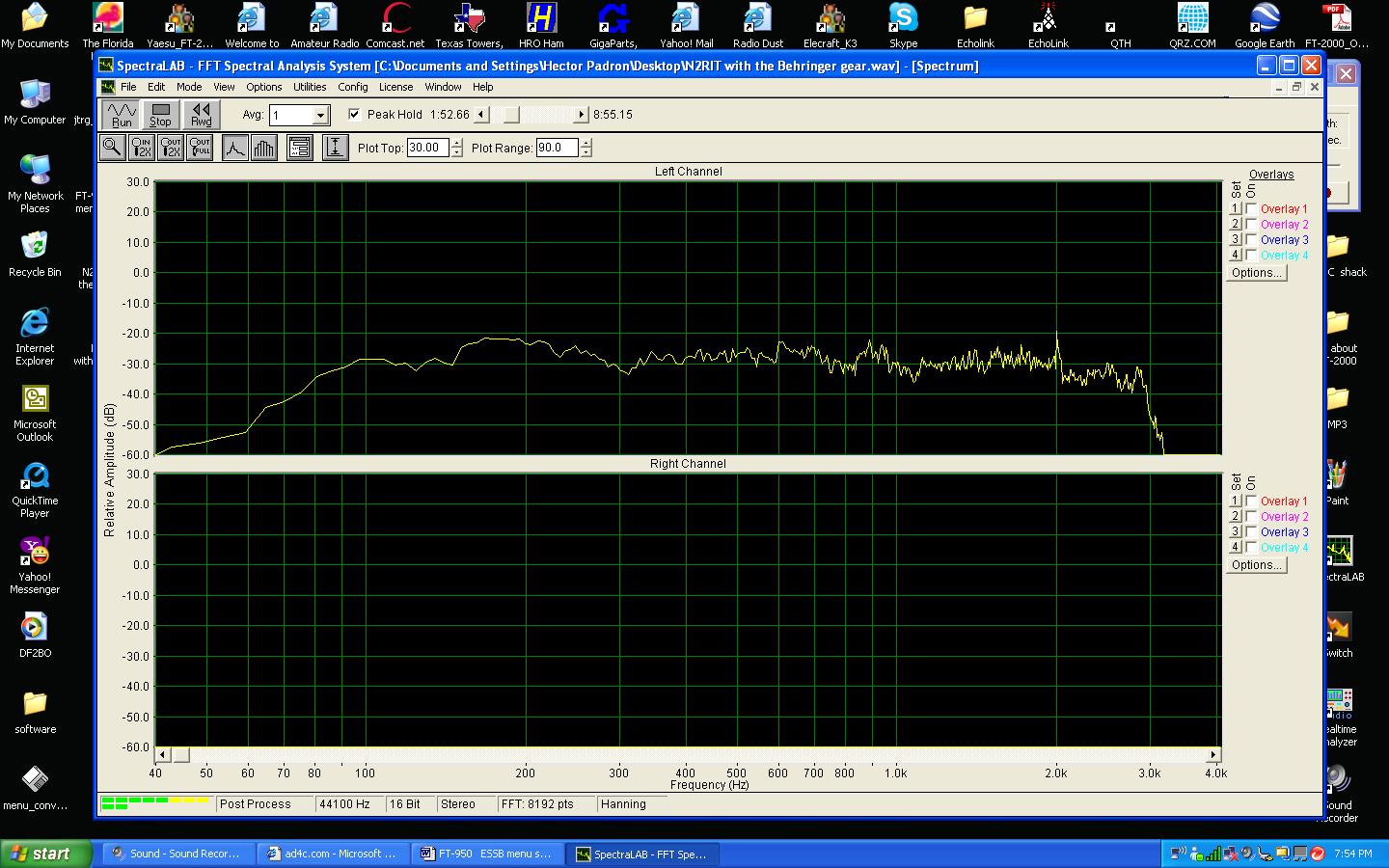
|
|
|
New Audio Setup
|
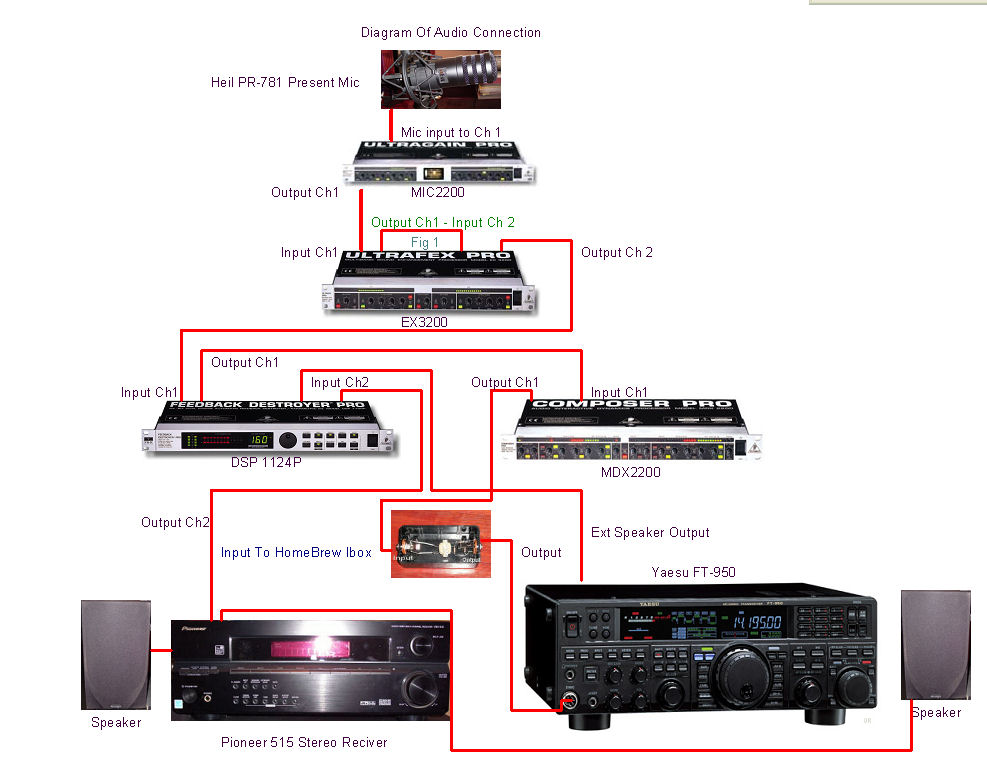
Fig 1 in the new audio chain diagram shows the
mod for the EX3200 by W5UDX. By connecting channel 1
output to channel 2 input.
|
|
|
Old Audio Setup
|
|
Here's a few pictures of my Behringer audio gear in
a home brew rack. II
Place cursor over image for a larger view |
|
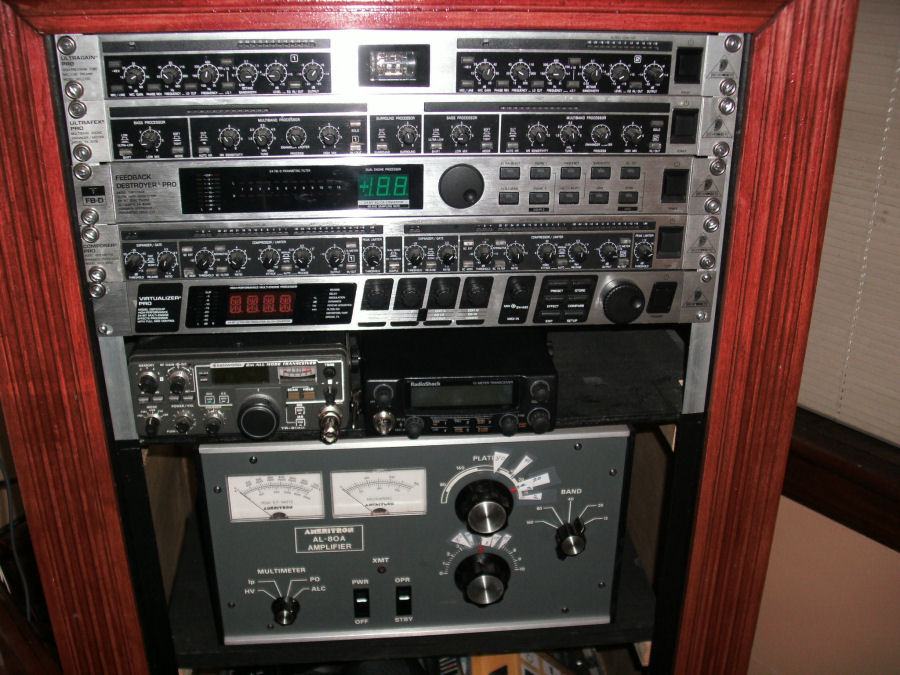 |
|
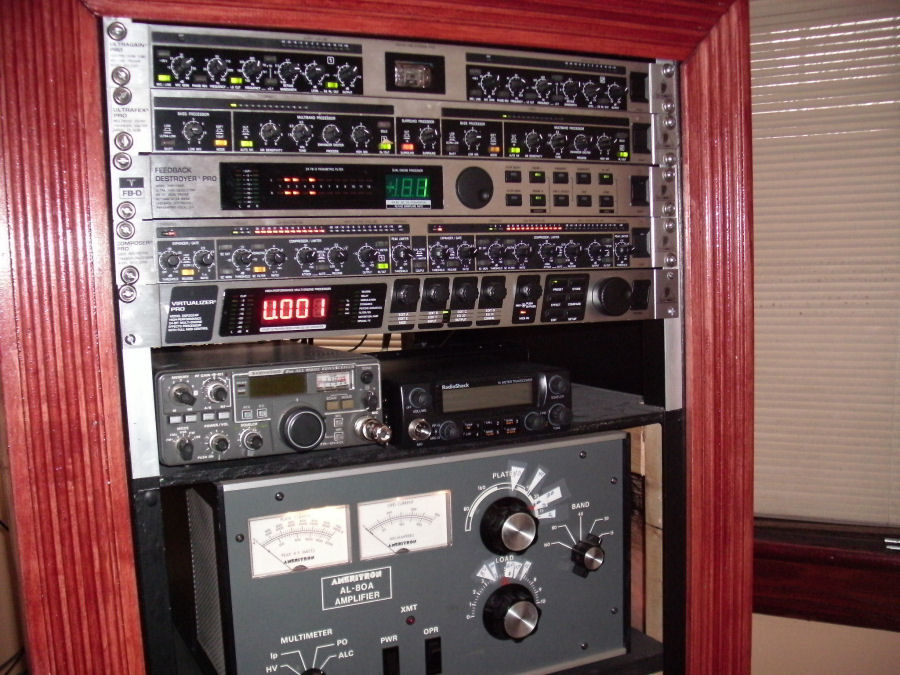 |
|
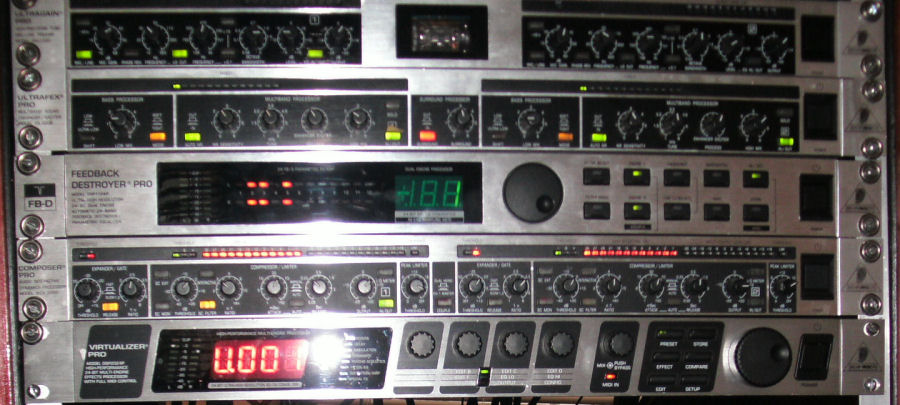 |
|
|
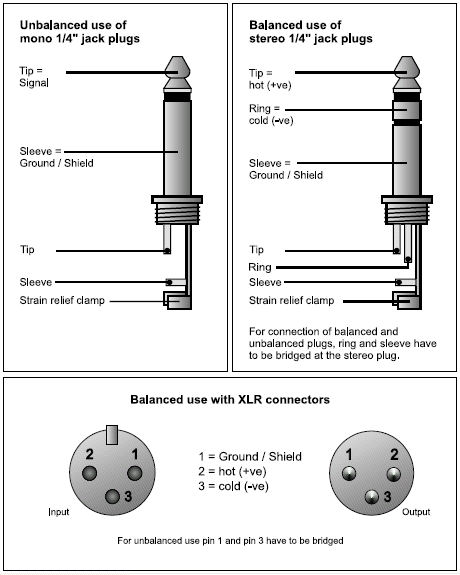
Cables are balance
audio cable. The diagram to the left shows you how to do this
should you have to make your own cables. When using balance cable be
sure it through out all your chain. |
|
|
I would not
suggest running any rack gear directly into the front of your radio
without some type of audio pad or ibox. The audio coming out the rack
gear is usually much greater than the audio front end of your radio
can handle. This pad should bring the audio level down about 23db
between the rack and radio.
Below is one of two different types of pads that I've built. This is a
very simple one that works. You may have these parts in your junk box.
The main part is the isolation transformer which can be purchased from
Allied Electronic for about $5.00. I purchased a couple of these to
have on hand. All resistors are 1/4 watt. Connector can be whatever
works for you. Because you do not need to have a balance input from
the last piece of rack gear into the radio. I used 1/4 phone
connectors. I key may radio via the PTT connector on the back of the
radio with a foot switch or the desk switch. I usually run vox so I
don't used either very much.
I would subject using a metal box if you can get one. If using a metal
box do not connect any resistors to ground. This is a floating ground.
I have not had any problems using a plastic box.
Note that the transformer has a (RED DOT) on it. My schematic is
indicated by a red plus sign this is the input for the rack gear.
Resistor R2 10K can be a variable one if you want adjust the level.
But found that the fix value works just fine.
This transformer is 600 ohms on the primary and secondary. Frequency
range 300 - 3500 Hz |
|
 |
|
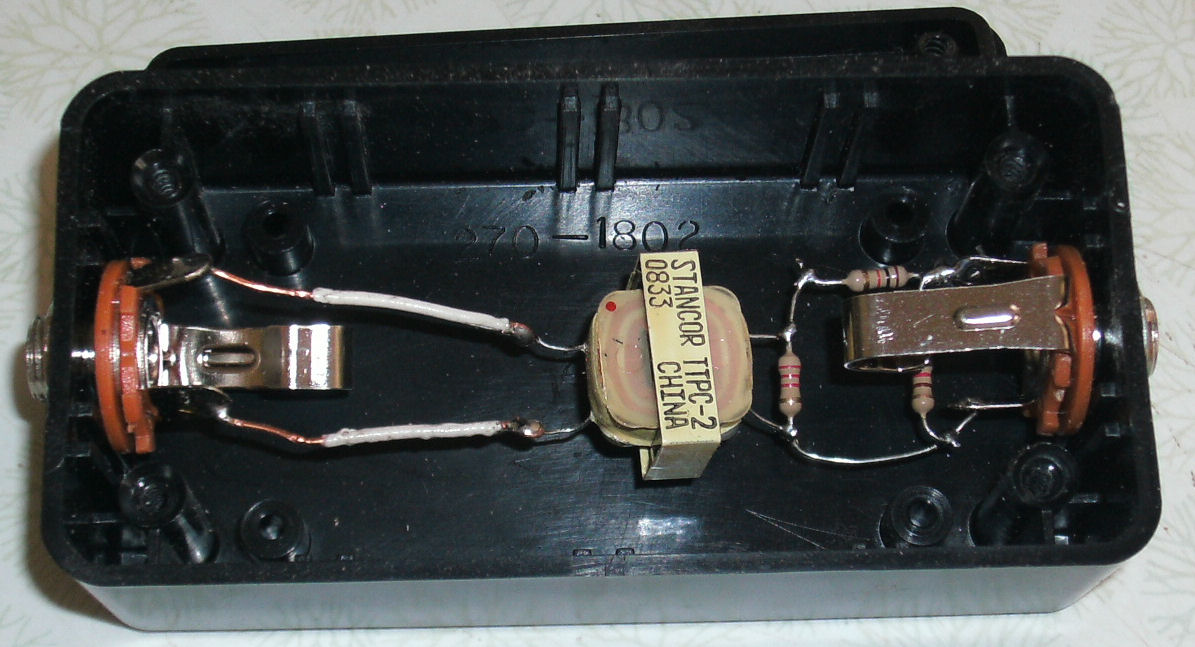
Place cursor over image for a
larger view
|
|
|
|
|
|
|
|
|













